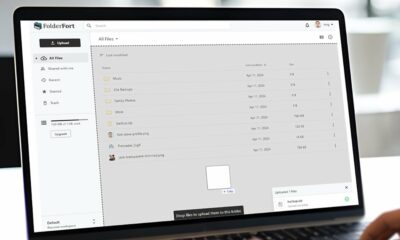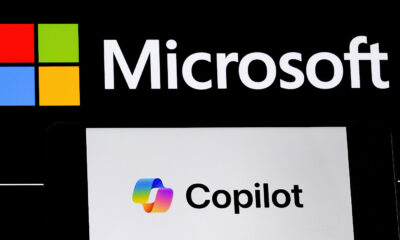TECHNOLOGY
How Artificial Intelligence Can Improve Back Office By Auditing, Streamlining Data and Verifying Documents

How Artificial Intelligence Can Improve Back Office By Auditing, Streamlining Data and Verifying Documents
Artificial intelligence (AI) can improve back office procedures by automating the auditing process, verifying documents and streamlining data.
AI has the potential for enhancing back-office efficiency with its applications, thereby automating mundane and tedious tasks and enhancing the overall business productivity.
Organizations are utilizing the power of AI and data analytics to harness the massive troves of data that fall into their database, with the aim to make the most out of it. AI’s potential to automate services, improve workflow efficiency, and reduce operational costs is attracting businesses to leverage the technology at an unprecedented rate. Despite a sense of fear around the technology regarding the unemployment of those whose jobs AI will take over, AI has proved beyond doubt that it can tremendously help both B2B and B2C companies in improving back office efficiency. So, let’s check out how AI is helping industries in improving their back-office processes:
How Artificial Intelligence is Enhancing Back Office Efficiency
AI takes over all the back office processes, shifting employees to lines of business operations that require critical business decisions to be made.
1. Automating Auditing Processes
Auditing an organization’s expenses is one of the most time-consuming tasks. Although auditing the costs is essential for conducting business seamlessly, ensuring every transaction detail is included correctly is a difficult job altogether. Enterprises usually have a team for taking care of reports and audits. But, a large volume of transactions take place daily, and employees are expected to audit every single expense report, along with meeting the work deadline and accuracy. As auditing expense reports is easier said than done, several companies are leveraging the power of automation to help their employees. AI allows companies to monitor company transactions, scan the credit card details, and also the expenses of a business traveler. Inside-out details of the organization’s costs are then audited, meeting all the regulatory laws and standards. Hence, AI will turn the complex auditing processes into an uncomplicated, error-free and streamlined process.
2. Streamlining Data Migration Using RPA
- Data entry is one of the most tedious jobs in any organization. Manually updating spreadsheets regularly by reading the values from another spreadsheet or a file is a cumbersome process altogether. Robotic process automation (RPA) can help skilled employees by taking up tedious, laborious, and mundane data entry jobs, meeting the new-age business needs. With RPA, companies can: Enable accurate and faster data migration processes,
- Get total help, from data entry to data collation to data reconciliation to report generation, and
- Allot workers to high-quality and critical lines of business.
3. Verifying Documents and Certificates For Compliance
Banks, airports, educational institutions, hospitals, insurance companies, and many others have to scan various documents a day in and day out. Manual scanning of documents and certificates is indeed a tedious job. AI can verify the authenticity and compliance of paper-work with an almost zero-error rate.
AI is a powerful technology that can detect fraudulent activities by unlocking hidden patterns from a large volume of data. It is just the right time for industries to embrace AI so that it can take over all the mundane, time-consuming, and repetitive back-office processes.
Source link



















You must be logged in to post a comment Login